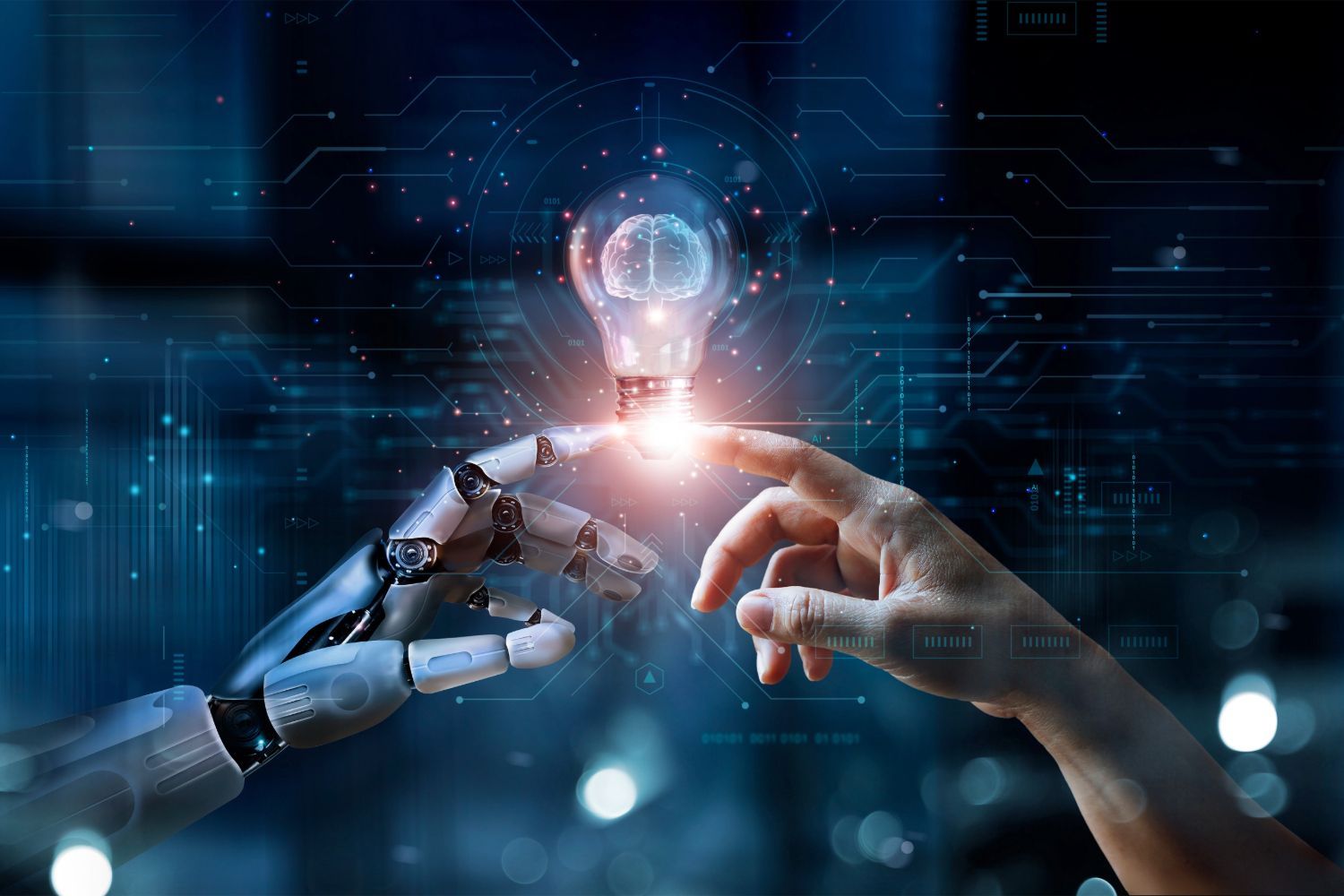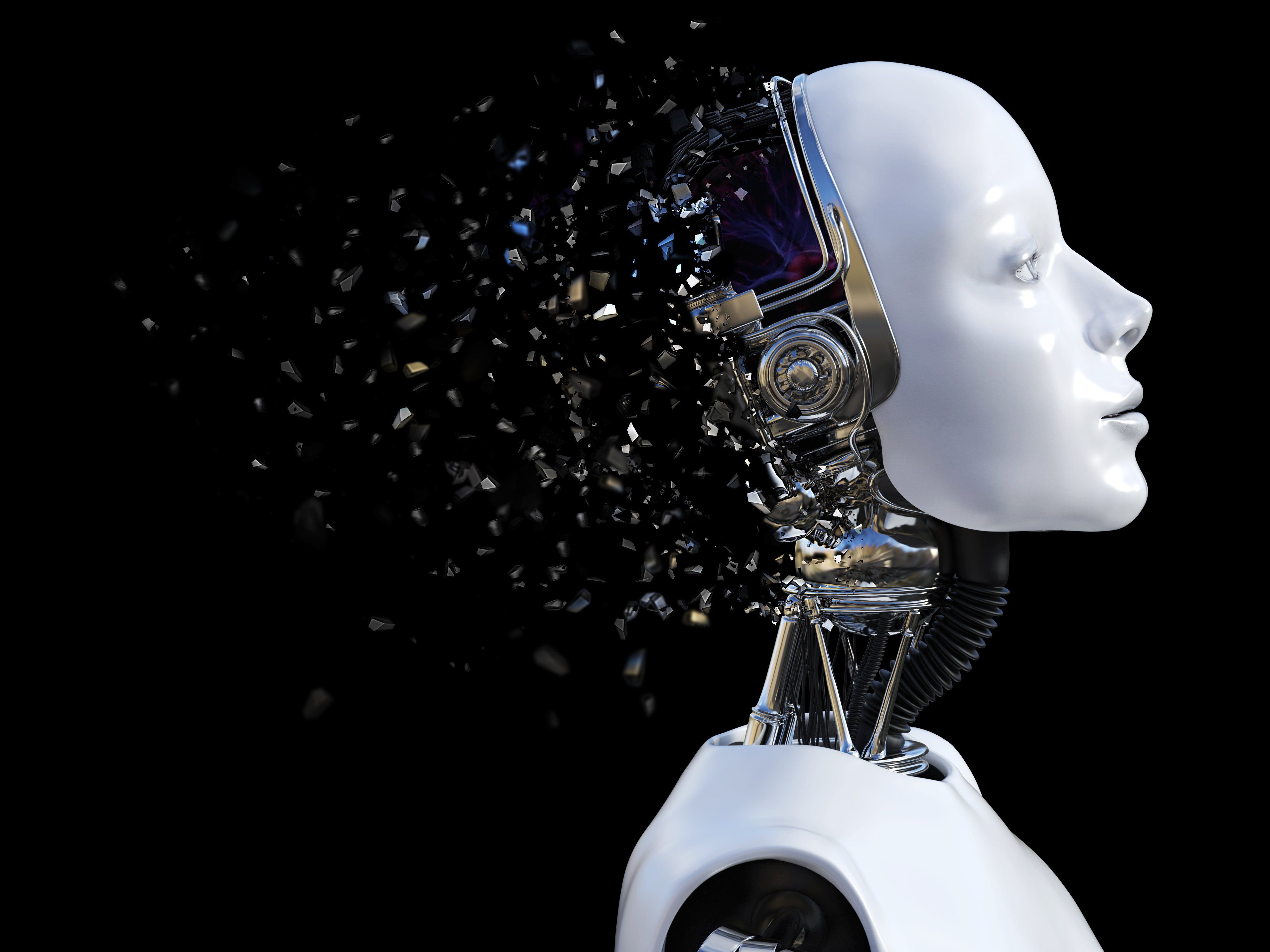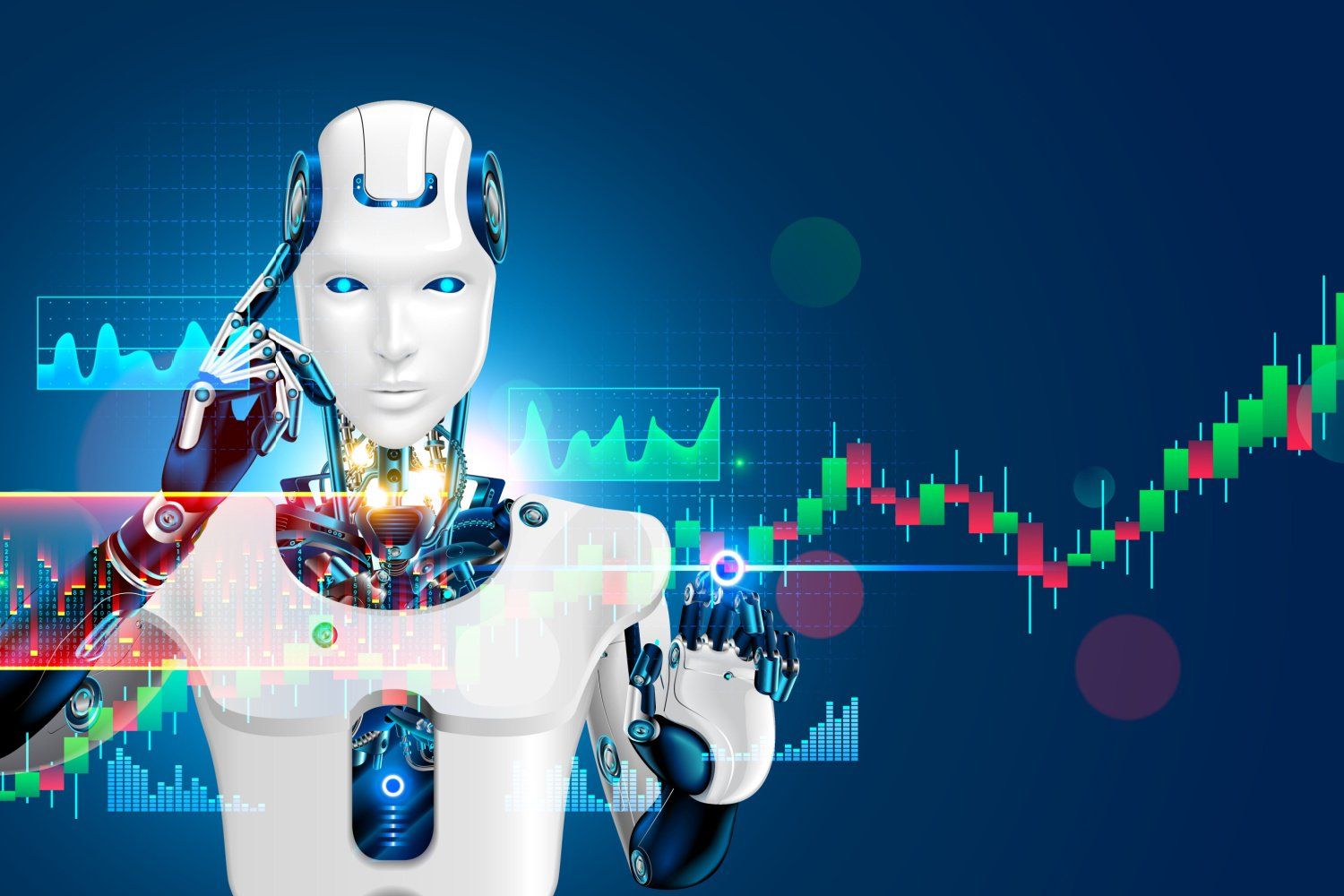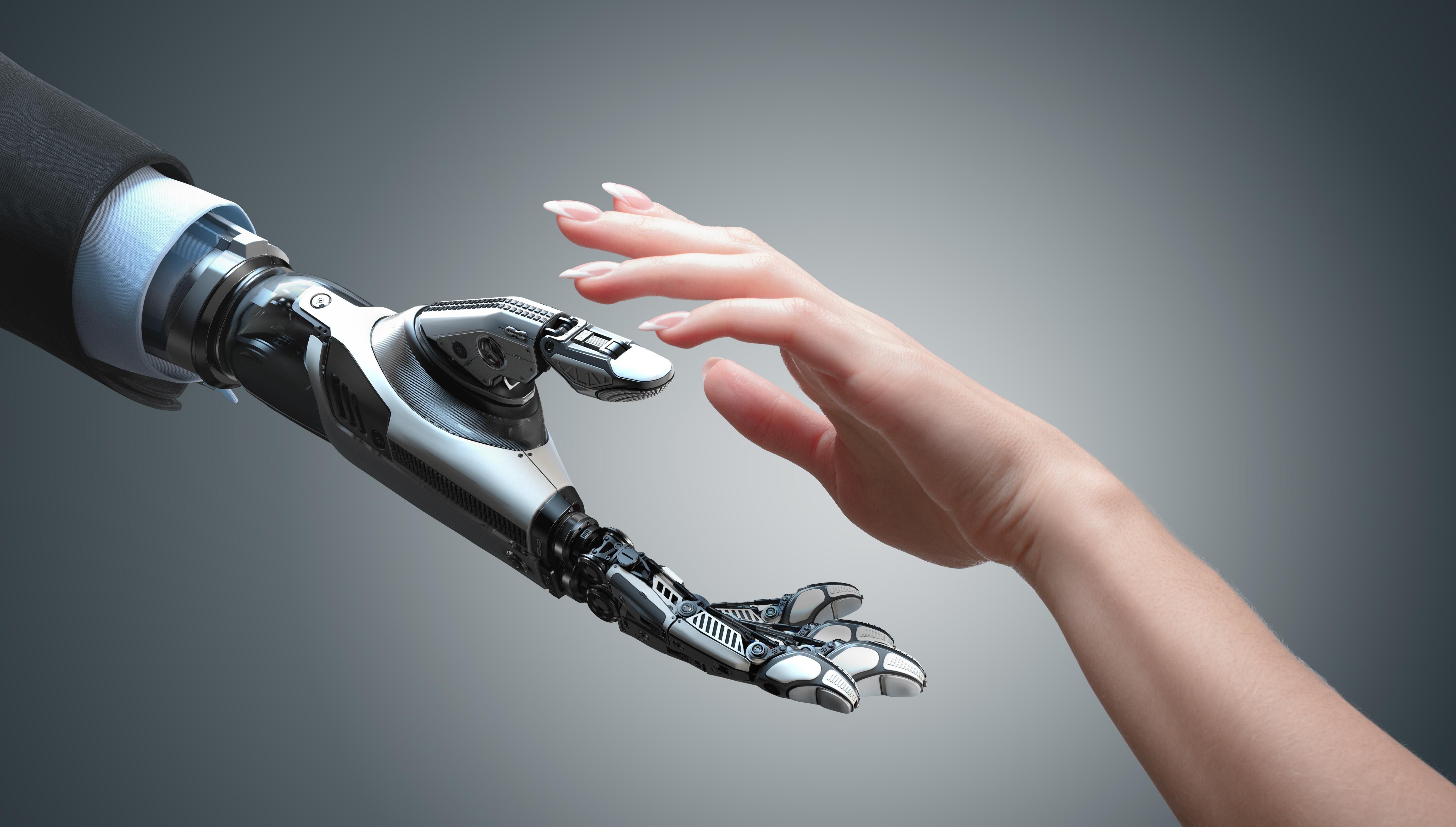The fusion of robotics and AI redefines what’s possible and opens up vast investment opportunities across diverse sectors, from healthcare to neuro-robotics to environmental sustainability and space exploration.
Where are robotics investment dollars flowing?
The robotics industry's growth is also being fueled by substantial research and development investments.
Global advisory firm Benchmark International estimates that the global robotics market will grow at a compound annual growth rate of 15.1 percent to reach US$169.8 billion by 2032.
In a retrospective on Oxford Economics' 2019 study How Robots Change the World, James Lambert, an expert on the economic impact of technology and the firm's director of economic consulting, Asia, said the following:
“Our prediction of rapid robotics adoption in manufacturing was on target. The economic promise of productivity gains and long-term growth have attracted sustained investment."
Industrial robots, used in assembly and materials handling, are also expanding. Analysis from Statista reveals that costs to deploy industrial robots have been declining over the last decade as new players increase competition and technology improves. The projected cost per robot in 2025 is as low as US$10,856, down from US$27,000 in 2017.
Companies leading the charge in this subsector include Swiss-Swedish ABB (SWX:ABBN,STO:ABB), one of the world’s largest robotics companies, and FANUC (TSE:6954), a Japan-based robotics company.
Lambert also highlights the growth of collaborative robots (cobots) and the surprising pervasiveness of robots in service sector jobs, saying, “The use of cobots … has expanded dramatically, with cobots operating alongside human workers in environments ranging from Amazon (NASDAQ:AMZN) warehouses to surgical suites.”
Amazon is expanding its robotics sector beyond warehouses with a pilot project for automated grocery stores.
Cobot sales volume is projected to increase by 6,100 percent from 2025 to 2045, as per market research by IDTechEx. Packaging and palletizing are experiencing especially rapid growth in the food and beverage industry.
“AI-driven robots are increasingly visible, providing concierge services, delivering groceries, and caring for the elderly. Humanoid robots like Tesla’s (NASDAQ:TSLA) Optimus and SoftBank’s (TSE:9434) Pepper are blurring the line between tools and colleagues," said Lambert about the future of the robotics industry.
NVIDIA (NASDAQ:NVDA), the top provider of graphics processing units (GPUs), is playing a crucial role. Its advanced chips are powering the next generation of robots, including Tesla's Optimus bot and its autonomous robotaxi service.
At the GPU Technology Conference in March 2024, NVIDIA revealed its ambitious plans to accelerate the development of humanoid robots with the introduction of Project GR00T, a foundation model designed to enable robots to understand natural language, learn from human demonstrations and perform complex tasks.
NVIDIA also launched a powerful computer, Jetson Thor, that is equipped with advanced AI capabilities and designed for humanoid robots. Jetson Thor will reportedly hit the market in H2 2025.
“The ChatGPT moment for physical AI and robotics is around the corner,” Deepu Talla, NVIDIA's vice president of robotics, told the Financial Times in a report exploring NVIDIA's pivot into robotics.
Beyond NVIDIA, other companies are also making significant contributions to robotics. In April 2024, Boston Dynamics shared that the newest version of its advanced humanoid robot Atlas will eventually be available for purchase. Boston Dynamics is further expanding its reach through its research partnership with the Toyota Research Institute.
Qualcomm (NASDAQ:QCOM) is another enabler of the current generation of robotics, having played a pivotal role in the development of 5G technology, which has enabled a new level of performance and autonomy for robots. The Robotics RB5 platform is Qualcomm's hardware and software development kit specifically designed for robots.
Healthcare sector integrating robotics technology
While still in the early stages, robotics integration in healthcare is becoming more widespread.
A Grandview Research report estimates that the global market for medical service robots will grow at a compound annual growth rate of 16.5 percent between 2025 to 2030, reaching US$84.8 billion by 2028.
Expected to come in at US$7.42 billion by 2030, surgical robotics is a burgeoning field thanks to advancements in medical robot technology that enable procedure-specific tools and capabilities.
Surgical robots can enhance patient safety and, in some cases, reduce recovery times, ultimately improving surgery outcomes, especially for precision surgeries involving the heart, brain and spine, for example.
Progress in the field continues with a recent breakthrough by researchers from Johns Hopkins University and Stanford University. They have developed robots capable of learning surgical procedures such as suturing by observing and mimicking actions in a video. This breakthrough, presented at the Conference on Robot Learning in Munich, Germany, in September 2024, marks the first time robots have been trained in this manner.
This rapid advancement in robotic surgery has attracted companies developing innovative surgical systems. Intuitive Surgical (NASDAQ:ISRG) has been a pioneer in the field of robotic surgery. Best known for creating the da Vinci surgical system, the company’s tools were designed to allow surgeons to perform operations through smaller incisions.
Its newest iteration, the da Vinci 5, builds on its lineup with enhanced tactile feedback and an upgraded 3D vision system. The system was granted clearance from the US Food and Drug Administration (FDA) in March 2024.
However, after years at the top of this niche industry, Intuitive Surgical is encountering competition from players like Medtronic (NYSE:MDT), which launched the Hugo RAS system in 2021. The company also began US clinical trials this past May for hernia repair and gynecological procedures. Additionally, newer market entrant Johnson & Johnson’s (NYSE:JNJ) medical device subsidiary, JNJ MedTech, received investigational device exemption approval from the FDA for its robotic surgical system OTTAVA in November; this approval means it can now begin trials.
Beyond general surgery, the robotic surgery field is expanding into specialized areas.
For example, Procept BioRobotics (NASDAQ:PRCT), a medical technology company specializing in urology, announced FDA clearance for its HYDROS robotic system in August 2024. HYDROS uses AI to help doctors perform personalized aquablation therapy. The company issued an offering of common stock on October 29 priced at US$91 per share, a strong indication of investor confidence in its future prospects.
This trend toward specialization is also evident in orthopedic surgery, where robotic systems are being increasingly adopted for knee and hip replacements. Stryker (NYSE:SYK) and Smith & Nephew (NYSE:SNN) are both key players here.
Stryker has achieved widespread adoption of its early entrant, the MAKO system, for knee and hip replacements. Smith & Nephew, while entering the market later with its handheld CORI system, affords surgeons greater flexibility and tactile feedback during procedures and offers a broader range of implant compatibility. Its newer system, the CORIOGRAPH Pre-Op Planning, complements the CORI for total hip arthroplasty by creating and importing a pre-operative plan to help guide surgeons during the procedure. The system received FDA clearance in December 2024.
Johnson & Johnson is also positioning itself as a contender in this growing market with its DePuy Synthes VELYS Robotic-Assisted Solution, a system designed to enhance the precision and accuracy of knee-replacement procedures by providing surgeons with real-time data and guidance during surgery. The system was showcased at the American Association of Hip and Knee Surgeons' 2024 annual meeting, and studies have suggested that it may lead to lower knee-related healthcare costs within 90 days of surgery compared to other robotic-assisted technologies.
Defense industry boosting robotics usage
Governments worldwide are increasing their military spending, with the US Department of Defense investing heavily in autonomous systems and drone technology. The Replicator Initiative, for instance, aims to deploy thousands of AI-powered unmanned aerial vehicles and robots, highlighting the growing importance of robotics in defense.
Palantir (NASDAQ:PLTR) and Anduril are two leading firms in this space, securing major contracts for data integration and autonomous systems development. Both companies are also involved in developing software integration architectures for the army's robotic combat vehicle program. Their collaboration on AI-powered solutions for national security and Anduril's research partnership with OpenAI have further solidified their positions in the defense sector.
In November, another major player, AeroVironment (NASDAQ:AVAV), released a software update to its uncrewed aircraft systems with a visual navigation system that allows drones to "see" and understand their surroundings, even in challenging environments when GPS signals are jammed or unavailable.
Beyond defense applications, advances in areas like autonomous navigation, sensor technology and data analysis have applications in space exploration, a transformative sector dominated by companies that are pushing boundaries with innovative technologies, such as reusable rockets and advanced navigation systems.
SpaceX and Rocket Lab (NASDAQ:RKLB) are important in this space. During SpaceX’s fifth test flight for its Starship, intended for lunar and Martian missions, giant robotic arms were used to catch the reusable Super Heavy booster during a Mechazilla “chopstick” landing. For its part, Rocket Lab has at least three launches planned for 2025, and is a strong contender for a major contract to build and launch satellites for the Space Development Agency.
Other companies using robotic technology to advance aerospace, satellite technology and Earth observation, such as Planet Labs (NYSE:PL), BlackSky (NYSE:BKSY) and Spire Global (NYSE:SPIR), have all experienced year-on-year growth.
Meanwhile, on the surface of Mars, NASA’s Perseverance rover is currently testing AI-powered software designed to autonomously identify rocks that may hold clues to the planet’s potential for past life. Government funding, which NASA relies on to fund the projects it contracts to private companies, is crucial to advancing space exploration. The proposed budget for NASA in 2025 is US$25.4 billion, 2 percent higher than last year’s budget.
And while NASA focuses on lunar exploration, Elon Musk — with a newfound influence on economic policy — has his sights on a more ambitious target: Mars. In September, Musk posted on X about his plans to send two Starships to Mars in 2026 and 2028, the next two upcoming launch windows for Mars missions this decade.
Casey Dreier, chief of space policy for the Planetary Society, has raised questions about how Donald Trump's re-election could impact the space industry and NASA, potentially leading to uncertainty and changes in funding priorities.
“The reality of canceling (lunar programs), many of which have enjoyed rock-solid support from Congress over the past decade, will be no easy task, and it is unclear that the Trump Administration would want to pick a fight with members of its own party, particularly given the narrow advantage Republicans hold in both congressional chambers,” he wrote in an op-ed following the election results. “This is an area to watch closely.”
Investor takeaway
The robotics sector is undergoing a period of rapid change, with startups like Figure AI and Physical Intelligence securing backing from high-profile investors like Jeff Bezos and tech’s heaviest hitters.
The involvement of major investors and established tech giants underscores the growing recognition of the immense potential within the robotics industry. As this landscape continues to evolve, staying informed and adaptable will be essential for investors navigating the opportunities and challenges that lie ahead.
Don’t forget to follow us @INN_Technology for real-time news updates!
Securities Disclosure: I, Meagen Seatter, hold no direct investment interest in any company mentioned in this article.
![]() View original content to download multimedia: https://www.prnewswire.com/news-releases/maxar-and-busek-thruster-system-for-nasa-lunar-gateway-passes-critical-milestone-301250199.html
View original content to download multimedia: https://www.prnewswire.com/news-releases/maxar-and-busek-thruster-system-for-nasa-lunar-gateway-passes-critical-milestone-301250199.html 







